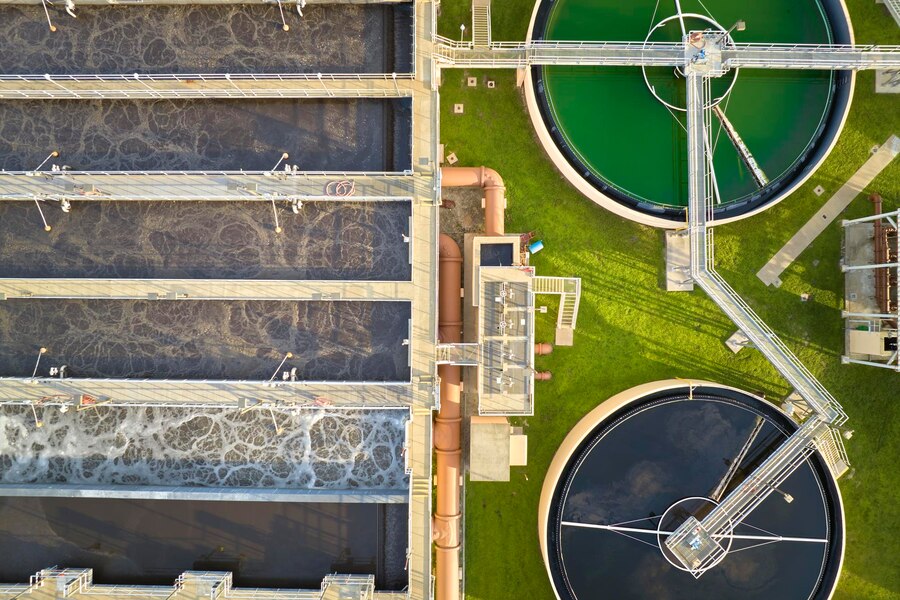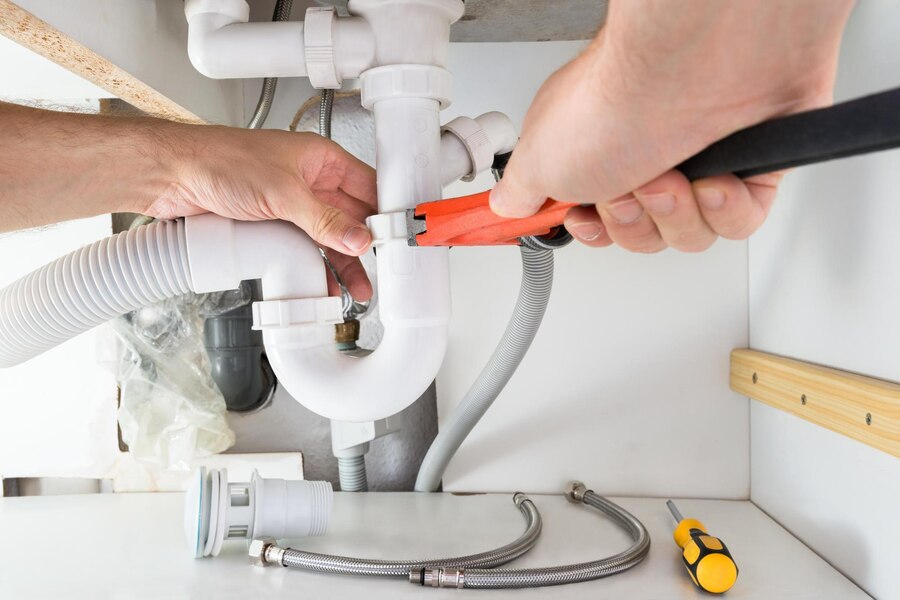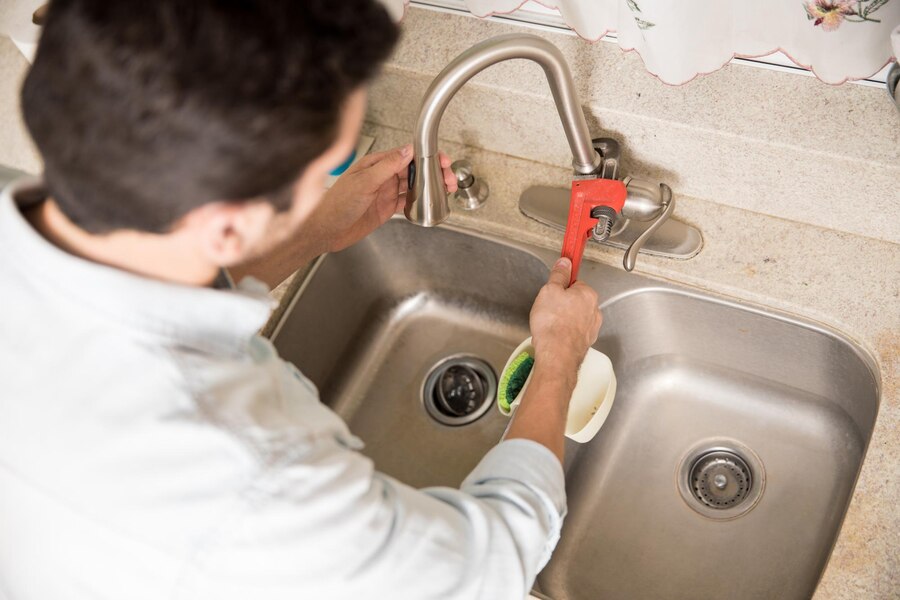Liquid Assets: Understanding Houston’s Water Infrastructure Crisis

In the heart of Texas, amid the bustling energy of one of America’s largest cities, lies Houston—a beacon of modernity and progress. Yet beneath its gleaming skyscrapers and sprawling suburbs lies a silent crisis: Houston’s water infrastructure is under strain. As we dive into the complexities of this critical issue, it becomes apparent that the challenges facing Houston’s water systems are multifaceted and urgent. From aging pipes to environmental threats exacerbated by climate change, the city grapples with maintaining a reliable supply of clean water to its residents. Join us as we explore the intricacies of Houston’s water infrastructure crisis, seeking to understand the stakes and chart a path towards sustainable solutions for the future.
The Anatomy of Houston’s Water Infrastructure
Houston’s water infrastructure is a complex web of pipes, treatment plants, reservoirs, and pumping stations that work tirelessly behind the scenes to deliver clean and safe water to the city’s residents. At its core, the system is built upon a network of aging pipes, some of which date back decades. These pipes crisscross the city, delivering water from its sources to homes, businesses, and industries. However, the age of these pipes has become a pressing concern, as many are prone to leaks, breaks, and corrosion, leading to water loss and contamination.
Houston’s water infrastructure must contend with the challenges posed by its geographical location. Situated in a region prone to extreme weather events such as hurricanes and flooding, the city’s water systems face additional stresses. Heavy rainfall can overwhelm drainage systems, leading to sewage overflows and contamination of water sources. Meanwhile, prolonged droughts can strain water supplies, forcing authorities to implement conservation measures and explore alternative sources such as groundwater and desalination. As Houston continues to grow and develop, the need to modernize and strengthen its water infrastructure has never been more urgent.
Aging Pipes and Hidden Vulnerabilities
Houston’s aging pipes represent a significant challenge to the city’s water infrastructure. Many of these pipes were laid decades ago and are now reaching the end of their lifespan. As they age, they become more prone to leaks, cracks, and bursts, leading to water loss, contamination, and service disruptions. These hidden vulnerabilities not only compromise the reliability of Houston’s water supply but also pose risks to public health and safety.
The underground nature of these pipes makes it difficult to detect and address issues before they escalate. Routine maintenance and inspections are crucial for identifying deteriorating pipes, but the sheer scale of Houston’s infrastructure presents a formidable task. As a result, many vulnerabilities remain unnoticed until they manifest as costly and disruptive problems, highlighting the pressing need for proactive strategies to address the challenges posed by aging infrastructure.
Climate Change and Houston’s Water Challenges
Climate change exacerbates Houston’s already formidable water challenges, amplifying the city’s vulnerability to extreme weather events and altering precipitation patterns. As temperatures rise, so does the frequency and intensity of hurricanes and tropical storms, which pose a dual threat of flooding and storm surge. These events not only overwhelm the city’s drainage systems but also jeopardize water quality by causing sewage overflows and contaminating surface water sources. Additionally, rising temperatures contribute to increased evaporation rates, exacerbating drought conditions and placing additional strain on water supplies.
The shifting climate patterns can disrupt the delicate balance between supply and demand for water. While intense rainfall events can lead to temporary surpluses, they are often followed by prolonged dry spells, necessitating careful management of water resources. Climate-resilient infrastructure and adaptive measures, such as green infrastructure and water reuse initiatives, are essential for mitigating the impacts of climate change on Houston’s water systems and ensuring the city’s long-term water security.
The Impact on Public Health and Safety
Public health and safety are intricately linked to the functionality and reliability of Houston’s water infrastructure. The consequences of compromised water systems extend far beyond inconvenience, affecting the well-being of individuals and the community as a whole. Here are some key impacts:
- Waterborne Diseases: Contaminated water due to aging pipes or infrastructure failures can lead to outbreaks of waterborne illnesses such as gastrointestinal infections, cholera, and dysentery, posing a serious threat to public health.
- Chemical Contamination: Leaks or spills from industrial facilities or improper disposal of hazardous substances can contaminate water sources, exposing residents to toxins and carcinogens with long-term health implications.
- Disruption of Services: Infrastructure failures, such as burst pipes or pump failures, can disrupt water supply to homes, hospitals, and emergency services, compromising the ability to maintain hygiene, treat patients, and respond to emergencies.
- Vulnerable Populations: Low-income communities and marginalized groups are often disproportionately affected by water system failures, lacking resources to access alternative sources of water or afford bottled water during disruptions.
Balancing Demand and Supply in a Growing City
As Houston continues to experience rapid population growth and urban development, the demand for water escalates, placing immense pressure on the city’s water supply infrastructure. However, this burgeoning demand must be balanced against the backdrop of climate change-induced water challenges. Climate variability, including increased frequency of extreme weather events such as hurricanes and droughts, further complicates the delicate equilibrium between water supply and demand in the region.
The unpredictability of climate patterns disrupts traditional water management strategies, necessitating adaptive measures to ensure resilience in the face of fluctuating conditions. For instance, innovative approaches such as rainwater harvesting, stormwater management systems, and water conservation initiatives are increasingly being adopted to augment traditional water sources and mitigate the impacts of climate change on Houston’s water supply. Moreover, long-term planning and investment in infrastructure upgrades and water efficiency measures are essential for meeting the growing demands of a burgeoning population while safeguarding against the uncertainties posed by a changing climate.
Innovations and Solutions for a Sustainable Future
In the quest for a sustainable future, innovative solutions are crucial to address the complex challenges facing Houston’s water infrastructure. Here are some key innovations and solutions paving the way forward:
- Smart Water Management: Utilizing advanced technologies such as sensors, data analytics, and real-time monitoring systems enables more efficient water usage, early detection of leaks, and optimization of water distribution networks.
- Water Recycling and Reuse: Implementing wastewater treatment and recycling systems allows for the purification and reuse of treated wastewater for non-potable purposes such as irrigation, industrial processes, and groundwater replenishment.
- Green Infrastructure: Incorporating nature-based solutions such as green roofs, permeable pavements, and rain gardens helps to manage stormwater runoff, reduce flooding, and enhance water quality by filtering pollutants.
- Desalination: Harnessing desalination technologies enables the conversion of seawater or brackish water into fresh water, providing a supplementary source of potable water particularly during droughts or water shortages.
- Community Engagement: Fostering public awareness, education, and participation empowers residents to adopt water-saving practices, promote conservation efforts, and advocate for sustainable water policies.
- Policy and Governance: Implementing regulations, incentives, and funding mechanisms that support sustainable water management practices and encourage investment in resilient infrastructure.
Community Engagement: Empowering Houstonians to Act
Community engagement plays a pivotal role in addressing Houston’s water challenges, empowering residents to become active participants in shaping the city’s water future. By fostering awareness and understanding of local water issues, community engagement initiatives cultivate a sense of ownership and responsibility among Houstonians. Through education campaigns, workshops, and outreach programs, residents gain the knowledge and tools needed to adopt water-saving behaviors, reduce water consumption, and contribute to conservation efforts.
Community engagement fosters collaboration and partnership between local government, nonprofit organizations, businesses, and residents, enabling collective action towards sustainable water management. By soliciting input from diverse stakeholders and incorporating community perspectives into decision-making processes, Houston can develop more inclusive and effective water policies and programs that reflect the needs and priorities of its residents. Ultimately, community engagement serves as a catalyst for positive change, mobilizing individuals and communities to work together towards a resilient and water-secure future for Houston.
Policy and Governance: Navigating the Waters of Regulation
In the realm of water management, policy and governance play a critical role in shaping the regulatory landscape and guiding decision-making processes. Here’s a closer look at how policy and governance initiatives navigate the complex waters of regulation:
- Regulatory Frameworks: Establishing comprehensive regulations and standards governs water quality, allocation, and usage, ensuring compliance with environmental laws and safeguarding public health.
- Integrated Water Management: Implementing integrated approaches to water management coordinates efforts across various sectors and jurisdictions, fostering collaboration and efficiency in addressing multifaceted water challenges.
- Stakeholder Engagement: Engaging stakeholders, including government agencies, industry representatives, environmental organizations, and community members, facilitates participatory decision-making processes and promotes transparency and accountability in water governance.
- Incentive Mechanisms: Providing incentives such as grants, subsidies, and tax incentives encourages investment in water conservation, efficiency, and innovation, incentivizing sustainable water practices and behaviors.
- Adaptive Management: Adopting adaptive management strategies enables flexibility and responsiveness to changing environmental conditions and emerging water issues, facilitating iterative learning and continuous improvement in water governance frameworks.
In Conclusion, understanding the intricacies of Houston’s water infrastructure crisis is vital for charting a path towards a sustainable future. From the challenges posed by aging pipes to the impacts of climate change and the importance of community engagement and policy initiatives, the road ahead requires collective action and innovative solutions. If you’re facing plumbing issues or planning a new construction project, trust SP Plumbing Solutions to provide expert assistance. Call us at 281-727-6798—we specialize in new construction projects but are always available for service calls. Let us handle your plumbing needs with care and expertise.


